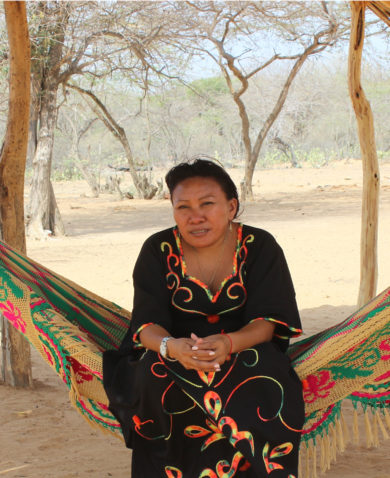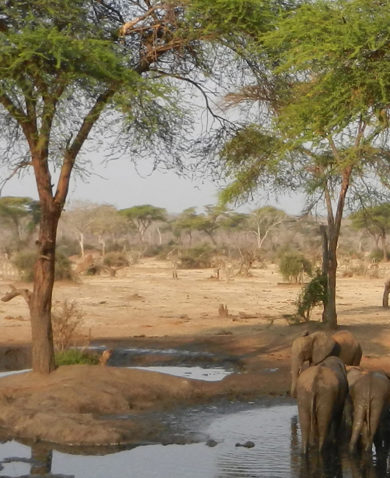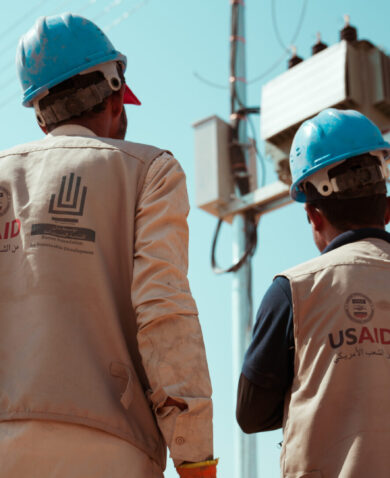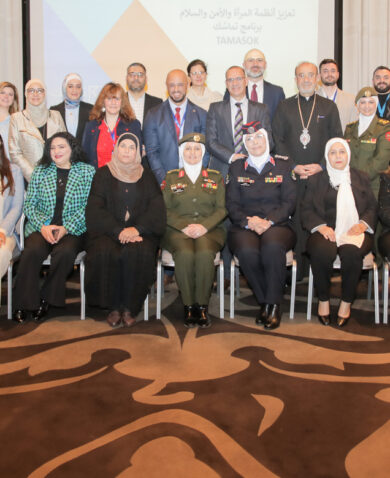
How Careful Use of Technology Can Guide Climate-Sensitive Peacebuilding
January 27, 2022 | 5 Minute ReadReducing violent conflict and battling the effects of climate change are significant challenges in and of themselves. Technology allows us to better analyze both issues by helping us determine where they intersect and exacerbate one another, untangling their driving factors and enabling us to develop smart solutions.
Countries already suffering from conflict and instability are often also on the frontlines of climate change. In Mali, rainfall has decreased by about 30% in the last 40 years, a severe crisis in a country where 80% of people depend on rain-fed agriculture. In Yemen, climate change has increased the country’s vulnerability to droughts and floods, deepening acute food insecurity amid the country’s humanitarian crisis. Of the 25 countries most affected by climate change, 14 are places that struggle with active violent conflict.
The relationship between climate and conflict is significant: disastrous weather events caused by intensified climate extremes can exacerbate existing social, environmental, and economic tensions, increasing the risk of violence. In turn, conflict-affected communities and states do not often have access to the resources required to respond effectively to the challenges posed by climate change. These risks compound to create a vicious cycle of instability, perpetuating environmental degradation, violent conflict, and displacement.
The Implications of Tech
New and emerging technologies enhance development practitioners’ means to study and elucidate the separate and intertwined issues of climate change and conflict.
Despite the promise that tech holds, there are some important caveats. Although tech solutions can be a significant asset, they have their limits and are most advantageous when used in conjunction with other tools and approaches. Moreover, there can be serious repercussions should the data that this technology generates be misused or fall into the wrong hands. Development and peace practitioners should foster the responsible and inclusive use of technology and ensure its application is conflict-sensitive and in line with “Do No Harm” principles.
How Can Tech Strengthen Both Climate and Conflict Programming?
New technology can complement more traditional research and analysis methods and provide a fuller understanding of the drivers of and solutions to dual conflict-climate challenges. The UK aid-funded Cross-Border Conflict, Evidence, Policy and Trends (XCEPT) research programme, which examines the drivers of violent and peaceful behavior and how conflicts connect across borders, demonstrates how technology can complement traditional research methods, such as surveys and interviews. From looking at how the availability of vegetation affects pastoralist mobility to examining the intersection of resource insecurity and migration, satellite and other increasingly prevalent technologies enable XCEPT to better understand the complex relationship between the state of natural resources and the presence of violent conflict.
In the remote tri-border area of Libya, Sudan, and Chad, XCEPT worked with RHIPTO (the Norwegian Center for Global Analyses) to research evolving conflict dynamics. The research sheds light on how decreasing oil prices have increased the appeal of other sources of revenue, including facilitating illicit migration and working in artisanal gold mining. Satellite data uncovered the growth in gold mining sites and, mixed with other data sets, helped demonstrate how the control over the flow of people, gold, and revenues influences different armed groups’ strength and drives conflict in the tri-border region.
This high-resolution imagery provides development and peace practitioners with vital insights into the state of natural resources and the actors controlling them. As discussed at Chemonics’ recent event with CSIS, these technologies open up new and exciting ways to explore how climate change impacts conflict and vice versa.
The Myriad Uses of Technology
Satellite Applications Catapult, a UK-based technology innovation company and XCEPT partner, helps facilitate the use of satellite-enabled geospatial data, including satellite imagery and radar data, to collect information for analysis. Satellite Applications Catapult’s Peter Beaumont explains how earth observation satellites can provide valuable data on geographic changes and dynamics.
“We can pull out information about the land cover type, the vegetation, the health of a crop that is growing … whether there is water presence on the ground, [and] the moisture content of the soil.” These are critical factors in analyzing the effects and patterns of climate change. As satellite data has been in use since the 1970s, “this gives us almost a 50-year archive of data, which is super important for assessing long-term change.”
Although earth observation is a particularly effective tool for gauging the big-picture effects of climate change over time, other technologies can provide us with more granular insights. These technologies include user-generated technology platforms, such as the suite of encrypted tools that This Is My Backyard (TIMBY) has developed. TIMBY enables people on the ground – those directly affected by the events in question – to report their findings anonymously through a secure app, yielding data that centers on local experiences, events, and insights. For example, indigenous communities in the Philippines have used the app to document illegal logging, fishing, mining activities, and other environmental violations witnessed. This documented evidence feeds into an initiative that aims to strengthen the ability of indigenous communities to protect and govern their land while prioritizing their own safety. Identifying, mitigating, and addressing land and resource rights issues is critical to preventing conflict from occurring or escalating.
More generally, tools such as TIMBY provide us with a better idea of how climate and conflict interact at the community level.
Technology Is an Asset – Not a Panacea
Dr. Alexander Ramsbotham, the director of research and innovation at the UK-based peacebuilding organization Conciliation Resources, characterizes the role of technology as auxiliary. “Complex problems need complex solutions. We hope that satellite technology will work alongside other sorts of analysis to build a clearer picture of the problem and effective solutions to it.” The data that technology can provide is only minimally useful on its own. It is simply an additional tool that researchers can use to complement traditional data collection methods, such as key informant interviews, social media analysis, and quantitative data from other sources. Conciliation Resources, an XCEPT partner, demonstrates this two-fold approach through their research on cross-border pastoralism and peacebuilding, which uses satellite technology alongside field data collection.
SERVIR Global, a joint USAID/NASA initiative that helps developing countries use satellites and geospatial technologies to manage climate risks and land use, is another example of a project that blends tech insights with on-the-ground data collection to achieve its objectives. The project boasts a toolkit that guides SERVIR implementers – including Chemonics – in ensuring that the use of this technology is anchored in consultations, user needs assessments, and other methods that facilitate a deeper understanding of the contextual landscape and what the correct approach should be.
The Risks of Technology
There are inherent risks in using technology in peace and climate programming: what happens if tools or data fall into the wrong hands? In Yemen, climate change has seen heavy rain flood lowlands. Military actors use the new climate patterns to their advantage, launching military attacks when they know floods impede their opposition from receiving reinforcements.
This is only one example of how armed groups and other malign actors, using only common knowledge and their observations, can weaponize the consequences of climate change to achieve their strategic goals. Should deeper insights from satellite data and other technology be publicized, this information could provide malign actors with increased opportunities to carry out attacks.
As such, development practitioners must think critically when using technology and sharing observations. Nathaniel Raymond, a lecturer at Yale University’s Jackson Institute for Global Affairs, noted at a recent XCEPT event that researchers often unintentionally provide valuable intelligence to bad actors. In particular, Raymond highlights the threat these technologies pose to revealing the location of at-risk or persecuted groups. XCEPT’s recent event noted the importance of developing ethical guidelines and frameworks to harmonize the development and research sectors’ use of these technologies.
The Role of Tech in Climate and Conflict Analysis
Climate change and conflict are inextricably linked, and development practitioners should consider this connection when designing and implementing programs that address either challenge. Communities that are resilient to the impacts of climate change are often better able to resist or recover from conflict. Focusing specifically on dual climate-conflict challenges, as well as how and where the two intersect, can provide us with targeted entry points to address these intertwined challenges.
Technology can’t provide a quick answer to complex problems, but it can serve as a valuable tool to help us better understand them. Integrating technology into our programming can assist us in developing innovative solutions as we move towards a more sustainable and peaceful future.
Banner image caption: An overhead image of circular farms and green fields in South Africa.
Posts on the blog represent the views of the authors and do not necessarily represent the views of Chemonics.


































